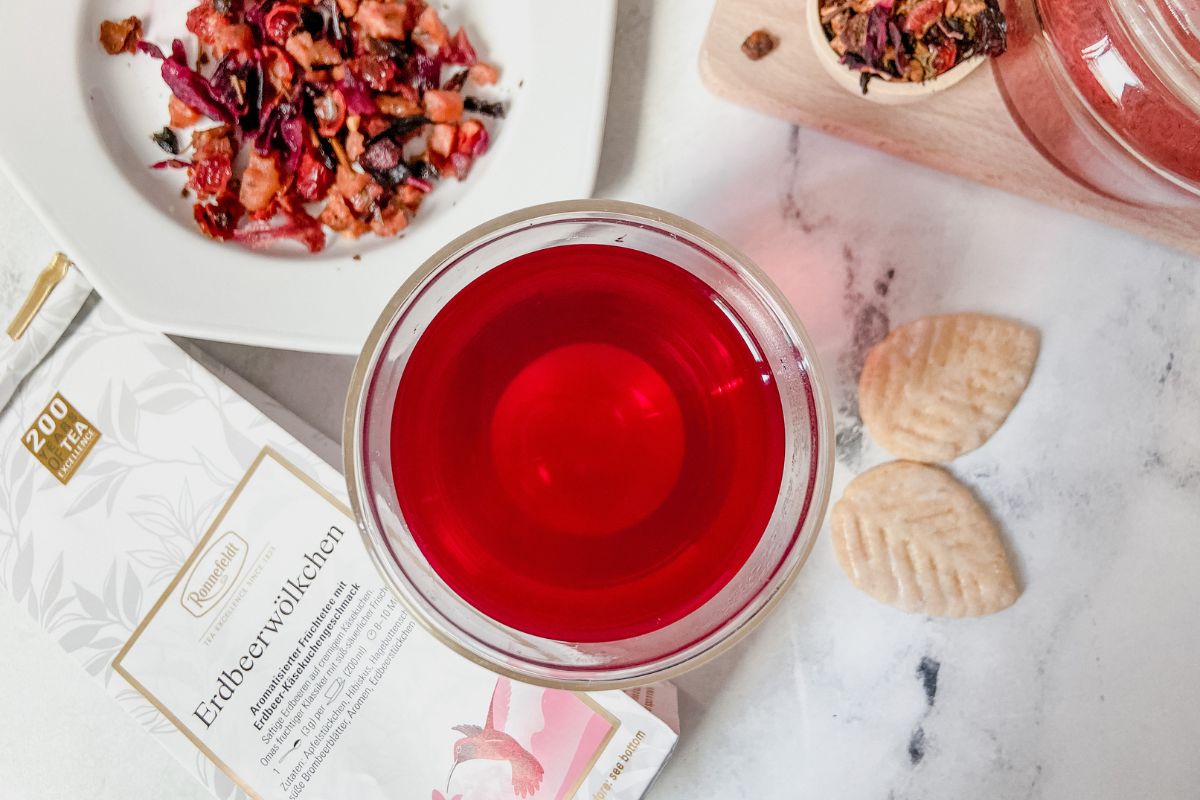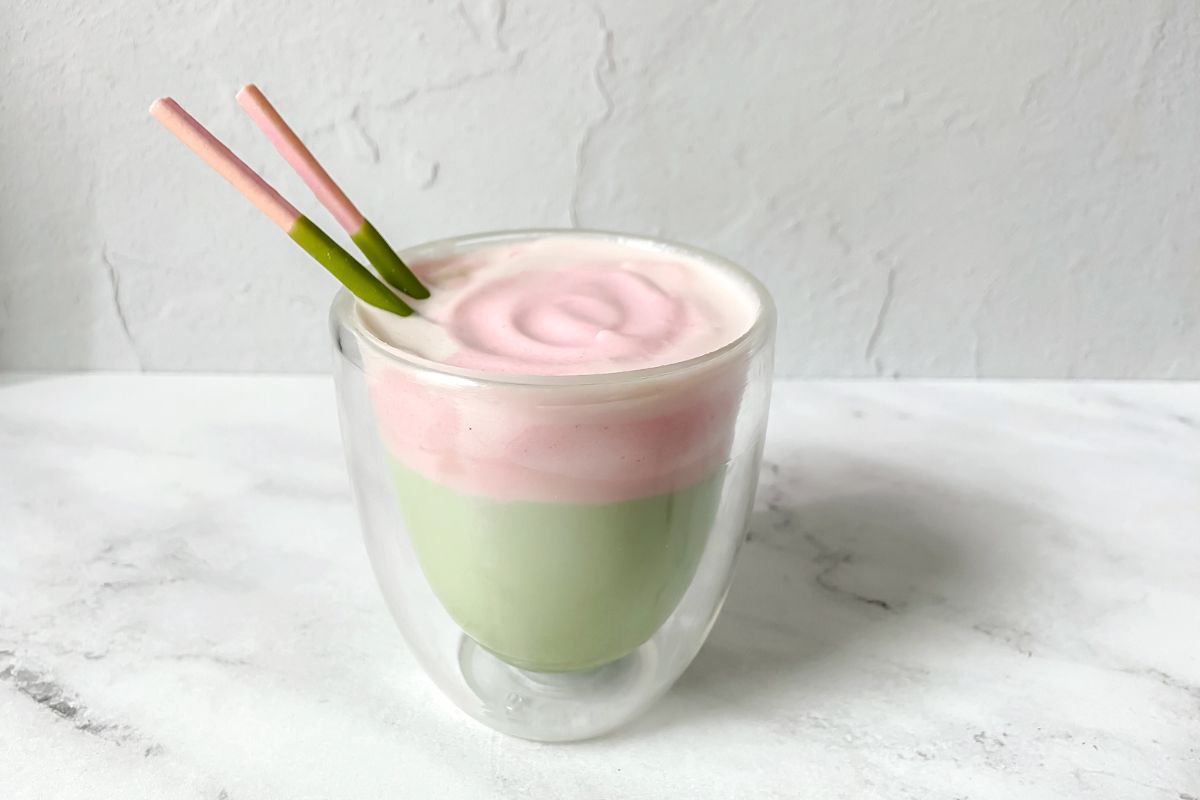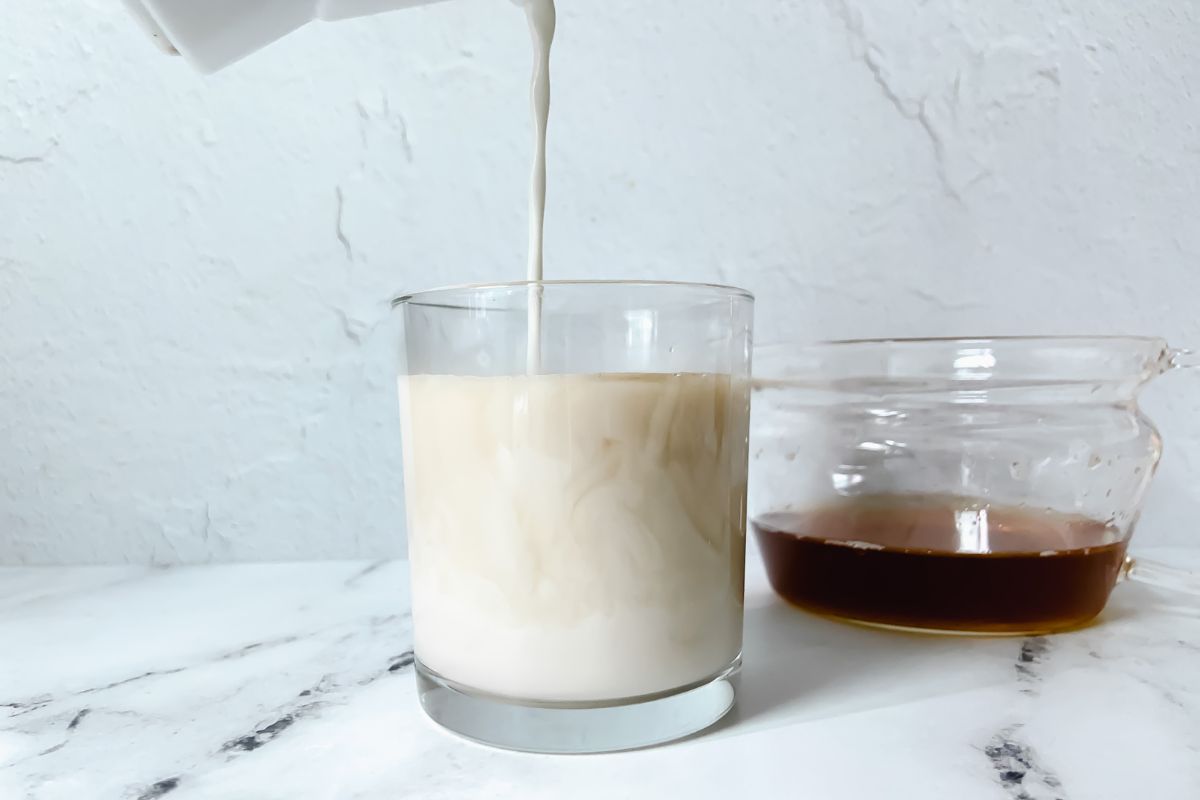Infusion vs. Tea: What’s the Difference?
All you need to know about the similarities and differences between infusions and tea

If you’ve ever wondered what’s the difference between infusion vs. tea, you are not alone.
In this post, I’ll help you understand the differences between these two types of beverages, so you know once and for all what they are about.
So, let’s steep into the details and brew up some knowledge about tea and infusions. Grab a cuppa and get cozy!
Are tea and infusion the same thing?
Tea and infusions are both popular beverages that have been around since a long time.
So, it’s somehow understandable that these terms often used interchangeably.
But actually, there are some key differences that distinguish the two:
- TEA refers specifically to the drink made from infusing leaves from the tea plant (Camellia sinensis)
- INFUSIONS can be a broader term including other plants, like leaves from a great variety of plants, flowers, roots and fruits soaked in hot water.
Because of this, tea (also known as real tea) needs shorter steeping time compared to herbal infusions, but we’ll cover these details bellow.
So, keep reading if you want to know more about infusion vs. tea!
Defining Tea and Infusion
What Is Tea?

Tea is a popular beverage made from the leaves of the Camellia sinensis plant.
It’s actually the second most consumed beverage in the world after water. And it has a long history dating back thousands of years!
There are several types of tea, including black, green, oolong, and white.
The difference between these types of real tea depends on their degrees of oxidation and processing methods.
You can prepare tea by steeping dried leaves from the tea plant in hot water for several minutes to extract its flavor.
The recommended water temperature and steeping time depends on the type of tea and it’s quite important to respect these instructions for a perfect cup.
The resulting tea liquor (liquid) should be flavorful but without unwanted bitterness.
I’ve made a cheat sheet with the general guidelines to steep tea (water temperature and steep time). You can check it further bellow.
What Is an Infusion?

On the other side, an infusion is a broad term referring to the method of extracting flavors and properties from various plant materials, such as herbs, fruits, or spices, by steeping them in hot water.
So, tea is an example of an infusion, but not all infusions are teas.
Herbal infusions (also known as herbal “tea”) for instance, don’t contain any actual tea leaves from the Camellia sinensis plant. So, they aren’t real tea.
Herbal infusions have been popular since ages because they offer a very wide range of flavors and aromas, as well as different beneficial properties.
Infusion vs. tea: the differences between them

We’ve just seen that tea and infusions are both popular beverages enjoyed by people around the world.
But while they may appear similar at first glance, there are distinct differences in their ingredients, origins, caffeine content, health benefits, and flavors.
Ingredients and Origins
Tea is a drink made from infusing tea leaves from the Camellia sinensis plant.
There are different types of tea, such as black, green, and oolong, which vary based on the processing of the leaves.
Infusions, on the other hand, are beverages made by soaking a wide range plant materials in hot water.
These can include herbs, fruits or flowers to name some.
Well known examples of infusions are rooibos, lemongrass, ginger or thyme among others.
Caffeine Content

One key difference between tea and infusions is the caffeine content:
- Leaves from the Camellia sinensis plant contain caffeine. Hence, real tea has caffeine.
- Herbal infusions are most of the time naturally caffeine-free.
Only a very small fraction of herbal infusions, like yerba mate, contain caffeine.
Health Benefits
Both tea and infusions offer their own health benefits.
Their benefits just differ depending on what they are made of:
- Tea leaves are known to contain antioxidants, particularly catechins in green tea, which may help combat free radicals and support overall health.
- Herbal infusions can provide a range of vitamins and minerals, varying based on the specific plant materials used.
Most of us have already heard of the benefits of herbal infusion.
For example, a ginger might relieve inflammation and pain, peppermint infusion might prevent bad breath, chamomile might help relax…
While some of these claims need to be researched further, it’s probably safe to say the most herbal infusion provide beneficial plant compounds, antioxidants and amino acids in varying amounts.
Flavors
Probably one of the most “no-tea-ble” difference between tea and infusions is the difference in their flavors:
- Tea leaves generally impart a subtle, earthy flavor to the beverage, with their own particularities depending on the processing method.
- Infusions have a broader range of flavors, based on the specific ingredients used.
Herbal infusions can be sweet, spicy, fruity, or floral, and can be combined in numerous ways to create unique flavor profiles.
RELATED: How to make your own tea blends
Types of Teas and Infusions
Now that you now what’s the difference between tea and infusions in general, we’ll take a look at some of the best known types of teas and infusions, their variations, and unique characteristics.
Common Tea Varieties
Tea (aka “real tea”) originates from the Camellia sinensis plant and its variations are primarily determined by the processing methods applied to the leaves.
Here are the most easily found tea varieties:
- Black Tea: Black tea is a fully oxidized tea, known for its strong flavor and dark color. It has a higher caffeine content compared to other varieties.
- Green Tea: Green tea is an unoxidized tea, with a more delicate flavor and lighter color. It is rich in antioxidants and there have been quite a lot of studies exploring its potential health benefits.
- Oolong Tea: Oolong tea is partially oxidized, sitting between black and green teas in terms of flavor, color, and health benefits. I personally find good oolong teas to be the most delightful!
- White Tea: White tea undergoes minimal processing, with only the buds and young leaves used. It has a subtle, delicate flavor and contains a high level of antioxidants.
RELATED: Curious about a specific type of tea? Check this cheat sheet with more than 70 different types of tea!
Popular Herbal Infusions
Unlike teas that come from Camellia sinensis, herbal infusions are made from a wide variety of ingredients such as herbs, spices, flowers, and fruits.
They are naturally caffeine-free and possess unique health benefits.
Here are some common herbal infusions:
- Chamomile: Made from chamomile flowers, this infusion is known to promote relaxation and may help with sleep.
- Peppermint: This refreshing infusion is derived from dried peppermint leaves and is often consumed to soothe upset stomachs and aid digestion.
- Hibiscus: Made from hibiscus flowers, this brightly colored infusion is known for its tangy flavor, and it may help in managing blood pressure.
- Ginger: Ginger root infusion warms the body and can be effective in alleviating nausea and supporting digestion.
Preparing Tea and Infusions
And finally, let’s dive into the exciting and delicious stuff!
In this last section we’ll explore how to prepare tea and infusions and the techniques, steeping time, and temperature needed for each. Get ready to become a pro at brewing your favorite beverages.
Brewing Techniques
For real tea, the most popular method is infusion, which involves pouring hot water over tea leaves and then them when the recommended steeping time is over.
In contrast, herbal infusions can be steeped for longer durations compared to tea.
Some herbal infusions are even prepared by simmering them in water, like in the case of cinnamon infusion or palo azul tea.
Although simmering is also used to make chai tea or Royal milk tea, this is less common.
Steeping Time and Temperature

Steeping time and temperature can vary depending on the type of tea or infusion being prepared.
For herbal teas, the general rule is to use 1-2 teaspoons of dried herb per cup of boiling water.
Then you can let it steep for at least 5-10 minutes and then strain it before drinking.
In most cases, it’s okay if you forget to remove the tea herbal, letting it steep for longer time: it usually doesn’t oversteep.
Actually, some herbal infusions should have a longer steeping time to extract more nutrients from the plant matter!
On the other side, you will usually need 1 teaspoon of dried tea leaves for every cup.
You should only use fresh boiled water for black tea, and lower temperatures for other types of tea (like green tea and white tea).
Also, you should be careful not to oversteep tea since it gets bitter, making it more difficult to enjoy its fine taste nuances and flavors.
In case of doubt, many vendors specify the recommended steeping time for their teas and infusions.
I hope this article has helped you understand the differences between tea and infusions!
As we’ve seen, both offer unique flavors and experiences.
So feel free to choose according to your personal preferences and the desired outcome for the moment and enjoy!
If you are interested in other questions related to tea, you might also like:







Thank you very much for explaining so in detail
We usually say Rooibos tea but now I understood technically it’s an infusion because there are lots of flavors and no caffeine.e